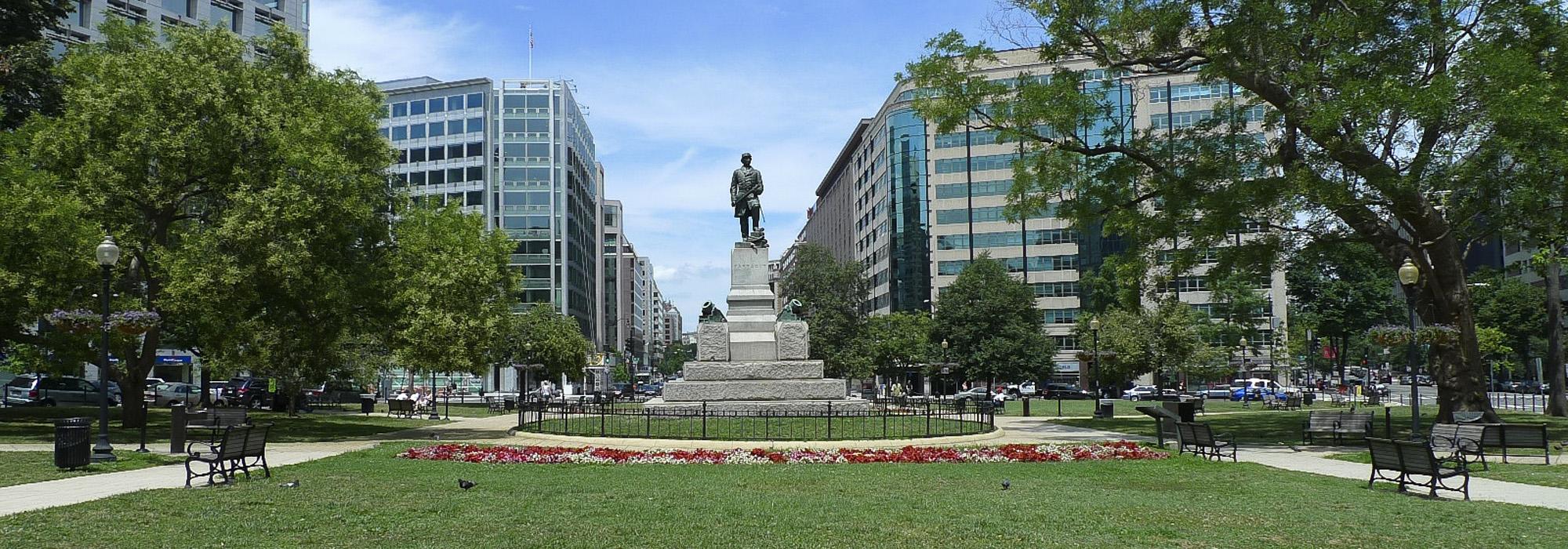Washington, D.C. and Newport, R.I. are subjects of New, Free What’s Out There Programs from The Cultural Landscape Foundation
Media Contact: Nord Wennerstrom | T: 202.483.0553 | M: 202.225.7076 | E: nord@tclf.org
A new online guide to Washington, D.C. and a weekend of free tours in Newport, R.I. May 9-10, 2015
Washington, D.C. (April 1, 2015) – The Cultural Landscape Foundation (TCLF) today announced that Washington, D.C. and Newport, R.I. are the subject of new, free What’s Out There programs. More than 75 sites and 50 designer profiles are featured in the What’s Out There Washington, D.C. Guide, an online resource with contemporary and historic images, succinct narratives and video oral histories. On May 9-10, TCLF working in partnership with The Preservation Society of Newport County will offer more than two dozen free, expert-led tours during What's Out There Weekend Newport County. The tours are free, but registration is required. Both programs are derived from TCLF’s free, searchable What's Out There database, the most comprehensive database of the nation’s designed landscape legacy, which currently has more than 1,700 entries, 900 designer profiles and 10,000 images. What’s Out There is optimized for iPhones and similar devices and includes What's Nearby, a GPS-enabled function that locates all sites in the database within a 25-mile radius of any given location.
The What’s Out There Washington, D.C. Guide, designed by Oviatt Media, is the latest in TCLF’s new series of online guides to urban destinations and follows the critically praised inaugural guide – for Denver – launched in November 2014. The D.C. Guide covers the designed landscape legacy of the nation’s capital from its late eighteenth century origins, through the seminal McMillan Plan of 1901 and into the city’s twentieth century history. The profusely illustrated, interactive guide features more than 80 sites, from the world renown, like the National Mall, to its Italianate side, including Meridian Hill Park, and smaller neighborhood parks. There are also links to TCLF’s Pioneers Oral Histories, with videos of the practitioners, M. Paul Friedberg, Lawrence Halprin, Carol Johnson, and Laurie Olin discussing projects they designed in the District of Columbia. The D.C. guide is made possible by Project Partner the National Trust for Historic Preservation and Media Partner dcist.
What's Out There Weekend Newport County is the twelfth in an ongoing series and the first of four such Weekends in 2015 (Weekends will also be held in Toronto, Ontario, Austin, TX and Denver, CO). More than two dozen free, expert-led tours will reveal the rich designed landscape legacy in Newport, along with Bristol, Jamestown, Middletown and Portsmouth. Complementing the Weekend will be a What’s Out There Newport County – approximately 60 pages in length with comprehensive narratives and full-color illustrations of all the tour sites. Following the event print editions of the guidebook will be available for purchase at select locations in Newport and through TCLF’s Web site; it will also be available as a free, downloadable PDF from TCLF’s Web site. The Weekend is made possible by Presenting Sponsor Bartlett Tree Experts, Partners The Preservation Society of Newport County, the van Beuren Charitable Foundation, The 1772 Foundation and the Newport Historical Society.
About The Cultural Landscape Foundation The Cultural Landscape Foundation (TCLF), founded in 1998, is a non-profit foundation that provides people with the ability to see, understand and value landscape architecture and its practitioners, in the way many people have learned to do with buildings and their designers. Through its Web site, lectures, outreach and publishing, TCLF broadens the support and understanding for cultural landscapes nationwide to help safeguard our priceless heritage for future generations. TCLF makes a special effort to heighten the awareness of those who impact cultural landscapes, assist groups and organizations working to increase the appreciation and recognition of cultural landscapes, and develop educational tools for young people to better connect them to their cultural landscape environs.
# # #



